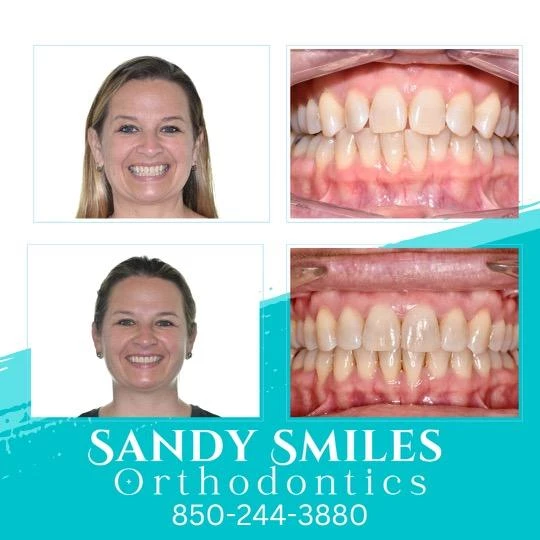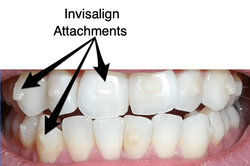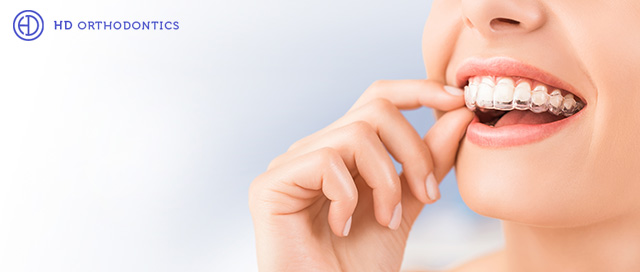Frequently Asked Questions Regarding Invisalign: Everything You Need to Know
Frequently Asked Questions Regarding Invisalign: Everything You Need to Know
Blog Article
Invisalign vs. Conventional Dental braces: Which Alternative Is Right for You?
When considering orthodontic treatment, the option in between Invisalign and standard braces provides numerous vital factors that merit careful analysis. Invisalign supplies a very discreet alternative with removable aligners, while conventional braces give a more visible yet effective solution for severe misalignment. Each alternative incorporates distinctive advantages and downsides connected to looks, convenience, therapy duration, and price. Understanding these subtleties is crucial for making an informed choice that aligns with your personal choices and way of living. The inquiry stays: which choice will finest satisfy your orthodontic requirements and expectations?
Introduction of Treatment Options

In contrast, typical braces include steel braces and wires that are bound to the teeth. This method applies continual pressure gradually to achieve alignment. While efficient for complicated orthodontic issues, typical dental braces call for normal gos to for modifications and can posture challenges in keeping oral health because of the difficulty of cleaning around brackets and cables.
Both options have their advantages, and the selection often depends upon specific dental conditions, way of living preferences, and individual conformity. Eventually, consulting an orthodontic expert is important for identifying one of the most ideal therapy strategy customized to private demands. Recognizing the subtleties of each alternative can significantly affect the total success of orthodontic treatment.
Visual Factors To Consider
A considerable factor affecting the option between Invisalign and typical braces is the aesthetic allure each therapy provides. Invisalign aligners are crafted from clear plastic, making them virtually unseen when used.
In contrast, standard braces include steel brackets and cables, which can be more recognizable. While improvements in orthodontic technology have caused the development of smaller sized brackets and colored elastics, typical braces still keep a more obvious profile. For some people, the visibility of braces might deter them from looking for required therapy.
Ultimately, the option in between Invisalign and conventional dental braces may rest on individual preferences pertaining to aesthetics. Individuals that prioritize discernment typically lean towards Invisalign, while those that are less concerned regarding presence may choose traditional braces. Comprehending the visual effects of each option is important for making an educated decision that aligns with one's way of life and choices.
Convenience and Convenience

In terms of convenience, Invisalign aligners are detachable, making it possible for individuals to enjoy their favored foods without limitation and preserve optimal dental hygiene. Brushing and flossing are streamlined, as the aligners can be gotten during these routines, whereas typical dental braces require mindful steering around wires and braces.
Additionally, Invisalign's dynamic system enables for fewer orthodontic gos to. Patients normally receive numerous collections of aligners at the same time, which can simplify the treatment procedure and minimize time invested in the orthodontist's chair. In contrast, traditional dental braces require normal modifications, making them much less practical for those with active routines. Invisalign. On the whole, the comfort and convenience of Invisalign make it an enticing her comment is here choice for several individuals looking for orthodontic treatment.
Treatment Period and Efficiency
While both Invisalign and typical braces work in dealing with dental misalignments, the period of therapy can differ substantially in between both choices. Generally, Invisalign therapy can take anywhere from 12 to 18 months, depending upon the intricacy of the instance. The clear aligners work by progressively changing teeth right into their desired settings, and routine follow-ups with an orthodontist assistance make certain progress stays on course.
On the other hand, traditional braces frequently need a longer dedication, generally varying from 18 months to three years. This is because of their fixed nature and making use of wires and brackets, which can be extra effective for complex cases and severe imbalances (Invisalign). The treatment effectiveness of conventional braces is well-documented, as they permit precise adjustments and better control over tooth activity
Inevitably, the option between Invisalign and typical braces might rest on both the anticipated treatment duration and the particular dental concerns available. Consulting with an orthodontist is essential, as they can provide customized referrals based upon private requirements, guaranteeing the chosen approach lines up with preferred durations and results.
Cost Contrast and Insurance Policy Choices
Cost plays a substantial function in the decision-making process for individuals taking into consideration orthodontic treatment, whether selecting Invisalign or typical braces. Usually, the expense of Invisalign ranges from $3,000 to $8,000, while typical dental braces normally cost in between $2,000 and $6,000. Elements affecting these expenses consist of the complexity of the case, the period of therapy, and geographical area.
Many dental insurance coverage strategies provide partial protection for orthodontic therapies, but the specifics can vary commonly. Usually, traditional braces may be a lot more frequently covered by insurance coverage strategies contrasted to Invisalign, which some insurance firms categorize as additional hints a cosmetic procedure.
Furthermore, a number of orthodontic techniques use versatile layaway plan, making both therapy alternatives extra accessible. Clients ought to ask about prospective financing choices and discount rates for in advance settlements. Evaluating the total cost, consisting of insurance advantages and settlement strategies, is essential for making an informed decision that aligns with both visual choices and spending plan factors to consider.

Verdict
In recap, the selection in between Invisalign and typical dental braces rests on multiple elements, including visual preferences, convenience, treatment duration, and expense. Invisalign uses a discreet, removable option that assists in oral hygiene and discover here nutritional flexibility, while conventional braces might be preferable for complicated dental issues and often come with a reduced rate point. Ultimately, consultation with an orthodontist is necessary to assess specific scenarios and determine one of the most ideal therapy option for attaining ideal dental positioning.
When thinking about orthodontic therapy, the option between Invisalign and typical dental braces presents a number of essential variables that merit mindful examination.Comparing Invisalign and standard braces discloses distinct therapy options for orthodontic improvement.While both Invisalign and conventional dental braces are efficient in remedying dental imbalances, the duration of therapy can vary significantly in between the two alternatives.Expense plays a considerable duty in the decision-making procedure for individuals considering orthodontic therapy, whether choosing for Invisalign or typical braces.In summary, the choice between Invisalign and typical dental braces hinges on several elements, consisting of visual choices, comfort, treatment duration, and price.
Report this page